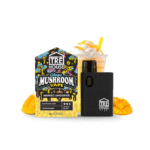Starting a business doesn’t always require a massive war chest of capital. In fact, some of the most successful entrepreneurs began with barely enough to cover their first investment. The vending machine industry presents one of those rare opportunities where you can genuinely get your foot in the door with minimal upfront costs. But can you really launch a viable operation with just $500? The short answer is yes—though it requires strategic thinking, resourcefulness, and realistic expectations about what that initial investment will deliver.
The Australian vending industry generates over $1.2 billion annually, with machines dispensing everything from cold drinks to fresh salads in locations ranging from office buildings to gymnasiums. What makes this business model particularly appealing is its passive income potential. Once you’ve secured a location and stocked your machine, it generates revenue whilst you sleep, work your day job, or manage other ventures. For someone willing to start small and scale gradually, vending machine hire and outright purchases offer two distinct pathways into this market, each with its own financial implications.
Let’s be brutally honest from the outset: $500 won’t buy you a brand-new, state-of-the-art vending machine with contactless payment systems and refrigeration. However, it can serve as your entry point if you’re willing to think creatively and work within constraints that many aspiring business owners overlook. The key lies in understanding exactly what your budget can realistically achieve and building from there.
Breaking Down the $500 Budget
Your initial capital needs to stretch across several essential categories. Here’s how a strategic allocation might look:
Machine Acquisition: $200-$350
The bulk of your budget goes toward securing your first machine. At this price point, you’re looking at second-hand mechanical or electronic vending machines in basic working condition. Facebook Marketplace, Gumtree, and local auctions frequently list older models from $150 to $400. These typically dispense snacks, chocolates, or canned drinks—simple products with straightforward mechanisms.
Expect cosmetic imperfections and potentially some maintenance requirements. That’s acceptable for a first machine. What matters is that the coin mechanism functions properly and the dispensing system works reliably.
Initial Inventory: $80-$120
Your product selection at this budget level needs to be smart. Focus on high-margin items that sell consistently. Chocolate bars, chips, and popular soft drinks typically offer 100-200% markup potential. A strategic first inventory might include:
- 20-30 chocolate bars at wholesale prices ($0.80-$1.20 each)
- 15-20 chip packets ($0.70-$1.00 each)
- 10-15 canned drinks if your machine has that capacity ($0.60-$0.80 each)
Buy from wholesale suppliers like Bidfood, PFD, or Campbells, where you’ll access significantly better pricing than retail outlets.
Transportation and Setup: $50-$80
Unless you own a ute or van, you’ll need to arrange transport for your machine. Hiring a vehicle for a few hours or enlisting a mate with a trailer keeps this cost manageable. Factor in fuel and possibly a sack trolley for moving the machine into position.
Business Registration and Insurance: $50-$100
Operating legitimately requires registering your business name and obtaining your ABN, which costs around $37 for three years. Public liability insurance, whilst not always legally required, protects you from potential claims if someone injures themselves using your machine. Basic coverage starts around $200 annually, though you might defer this initially if cash is genuinely tight.
Reserve Fund: $50-$70
Unexpected repairs, restocking opportunities, or location fees might arise in your first month. Keeping a small reserve prevents you from being completely caught out.
Finding Your First Machine
The second-hand market is your hunting ground. Older mechanical machines from the 1990s and early 2000s still function perfectly well for basic vending operations. These models lack modern features like cashless payment, but they’re reliable workhorses that require minimal technical knowledge to maintain.
When inspecting a potential purchase, test every function thoroughly. Insert coins and verify that the mechanism accepts them correctly and provides accurate change. Press each selection button to ensure the spiral coils or dispensing mechanism operates smoothly. Check for rust, particularly around the coin box and internal mechanisms, as this indicates poor storage conditions and potential future problems.
Some sellers offload machines because they’re exiting the business or upgrading to newer models. These situations often present the best value, as the seller simply wants a quick sale rather than maximum profit.
Securing a Location Without Upfront Fees
Your machine’s location determines its profitability more than any other single factor. A brilliant machine in a terrible location earns nothing; a basic machine in high-traffic area generates consistent revenue.
With limited capital, you cannot afford to pay location fees initially. Instead, target small to medium-sized businesses that might appreciate the convenience your machine provides without demanding rent. Consider:
Automotive Workshops
Mechanics and their customers often want quick snacks and drinks whilst waiting for vehicle repairs. These businesses typically don’t have vending already and appreciate the added convenience for their clientele.
Tradies’ Supply Stores
Customers browsing building materials frequently grab refreshments. The store owner benefits from extended customer dwell time without managing stock themselves.
Small Gyms and Yoga Studios
Fitness facilities outside major chains often lack vending options. Members appreciate post-workout snacks and protein bars. Start with a straightforward 50-50 profit split to make your proposal irresistible.
Community Halls and Sporting Clubs
These venues host regular events with consistent foot traffic but often lack refreshment options. They’re frequently operated by volunteers who value low-maintenance solutions.
Approach potential locations with a clear value proposition. You’re offering their customers convenience whilst taking responsibility for restocking, maintenance, and machine cleanliness. Propose a commission structure—typically 10-20% of gross sales—rather than fixed rent. This aligns incentives and keeps your initial overhead minimal.
Product Selection Strategy
Your limited stocking budget demands ruthless prioritization. Focus exclusively on proven sellers with healthy profit margins. According to industry data, the top-performing vending products in Australian machines include:
- Chocolate bars (Mars, Snickers, Kit Kat): Approximately 25-30% of sales
- Chip varieties (Smith’s brands): Around 20-25% of sales
- Soft drinks (Coca-Cola, Sprite): Roughly 15-20% of sales
Avoid experimental or niche products initially. You cannot afford inventory that sits unsold. Stick with recognizable brands that people purchase automatically without deliberation.
Price competitively but not cheaply. A chocolate bar that costs you $1.00 wholesale should retail for $2.50-$3.00 in your machine. This markup covers restocking time, fuel, machine maintenance, and profits whilst remaining reasonable compared to convenience store pricing.
Managing Operations on a Shoestring
Low-budget operations require personal involvement in virtually every aspect. You’ll handle restocking, cleaning, basic maintenance, and cash collection yourself. This hands-on approach actually provides valuable insights into your business that you’d miss if outsourcing from day one.
Establish a restocking schedule based on actual sales velocity rather than arbitrary timelines. Check your machine weekly initially to understand consumption patterns. Some locations might require twice-weekly visits; others might go ten days between restocks. Adjusting your schedule to actual needs saves time and fuel costs.
Track every transaction meticulously. A simple spreadsheet recording each visit’s starting inventory, sales, and restocking costs reveals your true profitability and identifies your best-performing products. This data becomes invaluable when making inventory decisions or negotiating with locations.
Basic maintenance—cleaning coin mechanisms, wiping down surfaces, replacing worn spirals—can be learned through YouTube tutorials and online forums. The vending community is surprisingly helpful, with experienced operators sharing troubleshooting advice freely.
The Reality of First-Year Earnings
Realistic expectations prevent disappointment and premature abandonment of your business. A single basic machine in a decent location typically generates $50-$150 weekly in gross sales. After product costs (approximately 40-50% of sales), location commission (10-20%), and operational expenses, your net profit might range from $20-$60 weekly.
That’s $80-$240 monthly from one machine—hardly life-changing income, but sufficient to fund your second machine within 2-3 months. This is where the business model’s true potential emerges. Each additional machine accelerates your growth trajectory, creating a snowball effect.
By month six, a diligent operator starting with $500 could realistically manage 3-4 machines, generating combined monthly profits of $400-$800. By year’s end, scaling to 8-10 machines producing $1,200-$2,000 monthly becomes achievable.
Common Pitfalls and How to Avoid Them
Overestimating Initial Returns
New operators frequently expect their first machine to generate significantly more than realistic projections suggest. This leads to discouragement and premature exit. Understand that you’re building a foundation, not achieving instant wealth.
Neglecting Cash Flow Management
Vending is a cash-intensive business requiring constant product purchases. Spending all revenue rather than maintaining working capital for restocking creates operational paralysis. Always reserve sufficient funds for your next inventory purchase before considering profits.
Poor Location Vetting
Desperation for any location leads to accepting poor sites that waste your time and resources. Better to spend an extra fortnight finding a solid location than months servicing an unproductive machine.
Inadequate Record-Keeping
Without detailed tracking, you cannot identify problems or opportunities. Are Tuesday restocks more efficient than Fridays? Which products underperform? Proper records answer these questions.
Scaling Beyond Your First Machine
Once your initial machine generates consistent profits, reinvestment becomes your growth engine. Rather than extracting all profits for personal use, channel them toward acquiring additional machines and inventory.
Your second machine should be slightly better than your first—perhaps newer, with more selection options, or targeting a higher-traffic location. Each successive addition should represent incremental improvement in your fleet quality and location portfolio.
As your operation grows, negotiate better wholesale pricing through increased order volumes. Suppliers offer discounts at various thresholds; reaching these tiers directly improves your profit margins without raising retail prices.
Consider diversifying beyond snacks and drinks once you’ve established operational competency. Healthy vending, coffee machines, or combo units offering both snacks and cold drinks can command premium locations and higher margins.
The Alternative: Vending Machine Hire
For those hesitant about equipment ownership, rental arrangements provide an alternative entry point. Some suppliers offer machines on lease or hire-purchase agreements, though these typically require higher monthly revenues to remain profitable after lease payments.
The advantage lies in reduced upfront capital and often-included maintenance support. The disadvantage is substantially reduced profit margins and contractual obligations that might not suit early-stage operations.
Long-Term Viability and Exit Strategies
Vending machines offer genuine business-building potential, but they’re not for everyone. The model suits individuals comfortable with routine operational tasks, irregular income during early stages, and gradual rather than explosive growth.
Successful operators eventually face a decision: continue growing their machine portfolio, hire staff to manage operations, or exit the business entirely. A well-maintained route of 20-30 machines with established locations holds tangible resale value, providing a legitimate exit strategy.
Final Considerations
Starting with $500 demands realism, resourcefulness, and persistence. You’re not building a tech startup with venture capital backing; you’re creating a traditional small business through sweat equity and reinvestment.
Success requires treating your vending operation seriously despite its modest beginnings. Professional conduct, reliable service, and quality products establish your reputation and open doors to better locations and opportunities.
The vending industry rewards operators who master fundamentals before pursuing sophistication. Learn on basic equipment in forgiving locations before investing in premium machines or competitive sites. Each lesson learned cheaply on a $300 machine saves potentially expensive mistakes on $5,000 equipment.
Can you start with $500? Absolutely. Will it be easy? Certainly not. But for someone willing to start small, learn continuously, and reinvest profits strategically, that initial modest investment can genuinely become a sustainable income source—and potentially much more.


